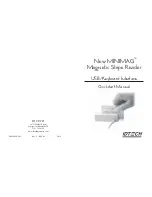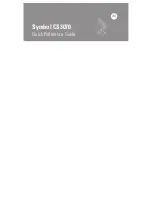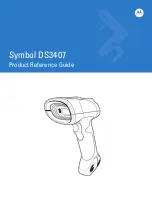
The lowest reflectance value for at least one bar (Rmin) must be half or less than
the highest reflectance value for a space (Rmax). For example, if the highest
space reflectance value is equal to 80%, the reflectance value of at least one bar
in the profile must be 40% or less. Minimum Reflectance is a Pass/Fail
parameter.
Rmin
≤
0.5 Rmax = PASS
Rmin > 0.5 Rmax = FAIL
Each transition from a bar to a space, or back again, is an “edge.” Edge contrast
is defined as the difference between peak values in that space (Rs) and that bar
(Rb). Each edge in the scan profile is measured, and the edge that has the
minimum contrast from the transition from space reflectance to bar reflectance,
or from bar to space, is the
Minimum Edge Contrast
or ECmin. In other words,
the minimum space reflectance adjacent to the maximum bar reflectance is used
to determine ECmin. Minimum Edge Contrast is a Pass/Fail parameter.
ECmin = Rs min - Rb max (worst pair)
≥
15% PASS
< 15% FAIL
Symbol Contrast
is graded A, B, C, D or F. Symbol Contrast is the difference
between the highest reflectance value (Rmax) and the lowest reflectance value
(Rmin) in a scan profile. The higher the value, the better the grade. This
parameter is calculated by subtracting the highest reflectance value minus the
lowest reflectance value measured in the scan profile. Symbol Contrast is a
graded parameter.
SC = Rmax-Rmin
A
≥
70%
B
≥
60%
C
≥
50%
D
≥
40%
F < 40%
Modulation
has to do with how a scanner “sees” wide elements (bars or spaces)
in relationship to narrow elements, as represented by reflectance values in the
scan profile. Scanners usually “see” spaces narrower than bars and scanners
typically “see” narrow spaces being even less intense or not as reflective as wide
spaces. Modulation is calculated as Minimum Edge Contrast divided by Symbol
Contrast. Modulation is a graded parameter.
MOD = ECmin/SC
30
















































